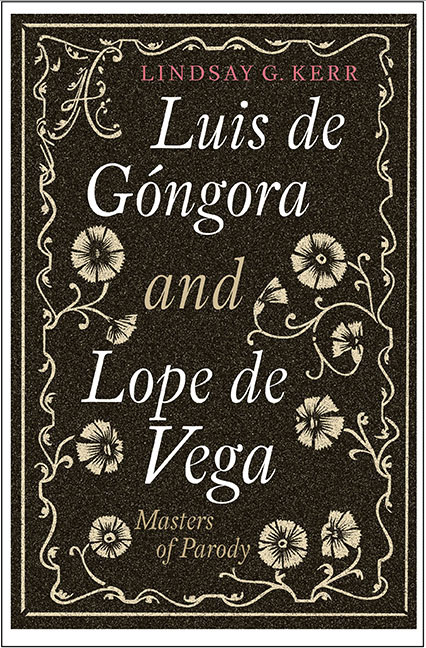Summary
In his 1935 introduction to one of the first annotated editions of La Gatomaquia, Francisco Rodríguez Marín makes the case for the relative obscurity of Lope's burlesque masterpiece. He rails against ‘los que imaginan ser innecesaria la exégesis en cuanto a las obras de este autor’, proceeding to give examples of Lope's invented words (‘piramizar’, ‘ñifiñafe’, etc.) and phrases that the uninitiated reader might consider an obstacle to understanding. Despite Burguillos's claims that ‘la vega es llana’ (147, v. 8), my analysis of La Gatomaquia will show that the plain surface dissembles much deeper foundations.
Structured in seven relatively even silvas, in 2,802 verses, Burguillos's Gatomaquia is narrated by an indeterminate voice that oscillates in its identification with Lope, Burguillos of the sonnets, and neither. The central premise of the poem lies in a feline love triangle that purposely and comically echoes the classical Paris–Helen–Menelaus triangle; Marramaquiz, ‘gato romano’ (I, v. 80), woos the beautiful Zapaquilda, who is in turn won over by the foreign novelty of Micifuf, descendant of the biblical Noah's cat, Zapirón (III, v. 207). Marramaquiz, driven in his rage to the rapture of the traitorous feline ‘Helen’ on the day of her wedding to the tardy (and vain) Micifuf, must then face the bellicose retaliation of the foreign cat. The text is littered with mythological images of women being forcefully taken by the gods (the exploits of Jupiter appear most frequently) but these seem to be mostly superficial decor. The depth of the poem, as we will see, lies not in the embellishments of mythological tropes, but in Lope's process of mythologising his own works. Various factors that contribute to this process will feature in the following analysis, including the constantly fluctuating generic consistency of the poem, a carnivalesque ethos and a rhetoric of materialism that grounds displays of lofty erudition, as well as the often complex philosophical threads and the text's preoccupation with time and the stars. The somewhat theatrical aspect of the poem is foregrounded in the Advertimiento al señor lector as the poet claims that an Aristophanic facade obscures Platonic truths; rather than traditional emphasis on the neo-Platonic in Lope's work, my analysis will focus on the Aristophanic connection.
- Type
- Chapter
- Information
- Luis de Góngora and Lope de VegaMasters of Parody, pp. 129 - 166Publisher: Boydell & BrewerPrint publication year: 2017

